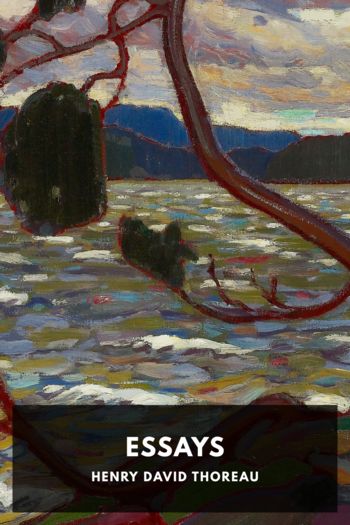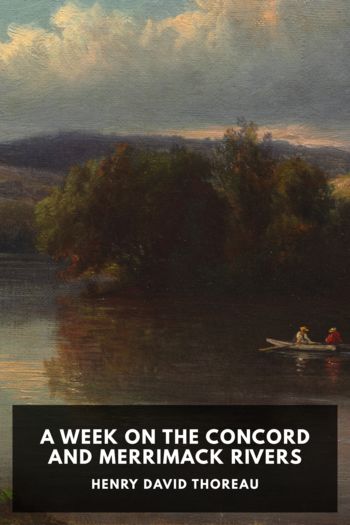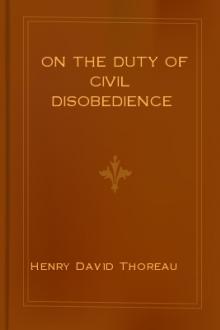Essays by Henry David Thoreau (feel good books .txt) 📕

Description
Though perhaps most famous for Walden, Henry David Thoreau was also a prolific essayist. Many of his essays touch on subjects similar to his famous book: long walks through nature, things found in moonlight that are invisible and unheard during the day, his preference for wild apples over domestic ones. In many ways he prefigured environmentalism, expressing his love for untouched nature and lamenting what the encroachment of man and cities were doing to it.
He also had strong opinions on many other subjects. One of his most famous essays, “On the Duty of Civil Disobedience,” was written as a result of his going to jail for refusing to pay several years’ worth of poll taxes. One of the primary reasons for his refusal was his holding the government in contempt for its support of slavery, and several of his other essays express support and admiration for John Brown, who thought to start a slave revolt when he attacked Harper’s Ferry in 1859.
Whether discussing trees in a forest, slavery, or the works of Thomas Carlyle, Thoreau’s essays are deeply personal and full of keen observations, often in poetic language. They give a sense of the man expressing them as being much more than the views being expressed.
Read free book «Essays by Henry David Thoreau (feel good books .txt) 📕» - read online or download for free at americanlibrarybooks.com
- Author: Henry David Thoreau
Read book online «Essays by Henry David Thoreau (feel good books .txt) 📕». Author - Henry David Thoreau
When we had come down and walked a dozen rods from the lighthouse, we found that we could not get the full strength of its light on the narrow strip of land between it and the shore, being too low for the focus, and we saw only so many feeble and rayless stars; but at forty rods inland we could see to read, though we were still indebted to only one lamp. Each reflector sent forth a separate “fan” of light: one shone on the windmill, and one in the hollow, while the intervening spaces were in shadow. This light is said to be visible twenty nautical miles and more, to an observer fifteen feet above the level of the sea. We could see the revolving light at Race Point, the end of the Cape, about nine miles distant, and also the light on Long Point, at the entrance of Provincetown Harbor, and one of the distant Plymouth Harbor Lights, across the Bay, nearly in a range with the last, like a star in the horizon. The keeper thought that the other Plymouth Light was concealed by being exactly in a range with the Long Point Light. He told us that the mariner was sometimes led astray by a mackerel-fisher’s lantern, who was afraid of being run down in the night, or even by a cottager’s light, mistaking them for some well-known light on the coast—and, when he discovered his mistake, was wont to curse the prudent fisher or the wakeful cottager without reason.
Though it was once declared that Providence placed this mass of clay here on purpose to erect a lighthouse on, the keeper said that the lighthouse should have been erected half a mile farther south, where the coast begins to bend, and where the light could be seen at the same time with the Nauset Lights, and distinguished from them. They now talk of building one there. It happens that the present one is the more useless now, so near the extremity of the Cape, because other lighthouses have since been erected there.
Among the many regulations of the Lighthouse Board, hanging against the wall here, many of them excellent, perhaps, if there were a regiment stationed here to attend to them, there is one requiring the keeper to keep an account of the number of vessels which pass his light during the day. But there are a hundred vessels in sight at once, steering in all directions, many on the very verge of the horizon, and he must have more eyes than Argus, and be a good deal farther-sighted, to tell which are passing his light. It is an employment in some respects best suited to the habits of the gulls which coast up and down here and circle over the sea.
I was told by the next keeper, that on the eighth of June following, a particularly clear and beautiful morning, he rose about half an hour before sunrise, and, having a little time to spare, for his custom was to extinguish his lights at sunrise, walked down toward the shore to see what he might find. When he got to the edge of the bank, he looked up, and, to his astonishment, saw the sun rising, and already part way above the horizon. Thinking that his clock was wrong, he made haste back, and, though it was still too early by the clock, extinguished his lamps, and when he had got through and come down, he looked out of the window, and, to his still greater astonishment, saw the sun just where it was before, two-thirds above the horizon. He showed me where its rays fell on the wall across the room. He proceeded to make a fire, and when he had done, there was the sun still at the same height. Whereupon, not trusting to his own eyes any longer, he called up his wife to look at it, and she saw it also. There were vessels in sight on the ocean, and their crews, too, he said, must have seen it, for its rays fell on them. It remained at that height for about fifteen minutes by the clock, and then rose as usual, and nothing else extraordinary happened during that day. Though accustomed to the coast, he had never witnessed nor heard of such a phenomenon before. I suggested that there might have been a cloud in the horizon invisible to him, which rose with the sun, and his clock was only as accurate as the average; or perhaps, as he denied the possibility of this, it was such a looming of the sun as is said to occur at Lake Superior and elsewhere. Sir John Franklin, for instance, says in his Narrative, that, when he was on the shore of the Polar Sea, the horizontal refraction varied so much one morning that “the upper limb of the sun twice appeared at the horizon before it finally rose.”
He certainly must be a son of Aurora to whom the sun looms, when there are so many millions to whom it glooms rather, or who never see it till an hour after it has risen. But it behooves us old stagers to keep our lamps trimmed and burning to the last, and not trust to the sun’s looming.
This keeper remarked that the centre of the flame should be exactly opposite the centre of the reflectors, and that accordingly, if he was not careful to turn down his wicks in the morning, the sun falling on the reflectors on the south side of the building would set fire to them, like a burning-glass, in the coldest day, and he would look up at noon and see them





Comments (0)